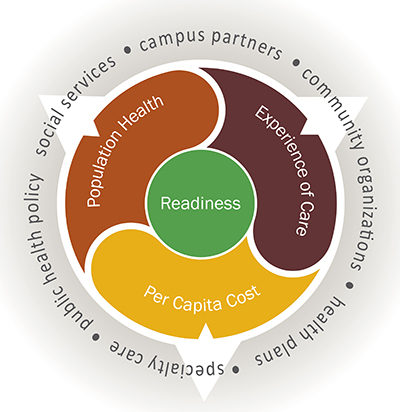Cornell Health is proud to be recognized as a national leader in college health.
As a unit within the Division of Student and Campus Life, our goal is to support campus health, and foster student readiness to learn and participate fully in the Cornell experience (see “Our mission and vision,” below). We strive to provide high-quality care that recognizes the experiences, values, and needs of the individuals who make up Cornell’s diverse community.
View this four-minute video for an overview of the services and support options you can find at Cornell Health:
Cornell Health at a glance
Cornell Health …
- Provides integrated medical and mental health services on Cornell’s Ithaca campus [see Services]
- Serves more than 80% of Cornell students each year, with about 22% of students accessing our mental health services (equaling 110,000+ in-person and virtual health care visits annually) [see Who We Serve]
- Welcomes an average of 800 students each day during the academic year for medical and mental health visits, visits to the pharmacy, consultations with our Student Health Benefits and Student Disability Services offices, and community meetings
- Employs more than 250 staff members, including physicians, counselors, psychiatrists, nurses, technicians, pharmacists, physical therapists, and educators [see Our Staff]
- Manages public health campaigns, and leads campus initiatives related to mental health, alcohol and other drugs, hazing, and sexual violence [see Initiatives]
- Utilizes a funding model for core medical, mental health, and public health services that promotes access to care [see Cost for Service]
Learn more about ...
Our Mission & Vision
Our Mission
To foster lifelong learning and well-being through innovative services and strategies that promote the physical, emotional, and social health of individuals and our diverse campus community.
Our Vision
To support the readiness of our community to learn, to participate fully in the Cornell experience, and to achieve academic, work, and life success.
How we advance our vision:
- Provide an experience of care that keeps those we serve at the center of everything we do; is respectful, compassionate, accessible, equitable, affordable, and safe; and is well-coordinated and focused on the whole person.
- Improve population health through individual and population interventions (that reach all who need them), environmental strategies, institutional leadership, policy development, and public engagement.
- Control per capita cost by focusing on best-practice standards and empowering all team members to contribute fully.
- Facilitate local integration of care and services within the organizations and departments that most contribute to the health of our community.

The above framework is modified from the Military Health System's Quadruple Aim - based on the Institute for Healthcare Improvement's TripleAim (a guide for optimizing health system performance and outcomes).
Our history & transition to “Cornell Health”
The original Gannett Clinic opened on Ho Plaza in 1956, named by the Gannett Foundation to honor media mogul Frank Gannett, CU 1898. In 1979, the facility was expanded to meet the needs of a growing student body. The clinic was renamed “Gannett Health Services” in 2000 to reflect the expansion of health services beyond the Ho Plaza facility, when several Gannett departments moved to other campus buildings due to space constraints.
Gannett was renamed “Cornell Health” in March 2017, in anticipation of our new health services facility opening in summer 2017. An update and expansion of the original Gannett building, the new Cornell Health facility increased access to care for a student body that has more-than doubled in size since Gannett first opened, and increased utilization of health services by 250%. The project had been a strategic priority of the University since the early 2000s, and was funded through a combination of university funding and the gifts of generous donors.
Learn more about our history, our philosophy of care, and our transition from Gannett to Cornell Health in our Foundations of Cornell Health document, published in November 2015.
Contact us
We invite you to contact us with any questions or feedback you might have. Please visit our Contact Us page for information.

